The Pegaso VEC-M1 is a Spanish military cavalry reconnaissance vehicle started in 1980 as the BMR-625 VEC (Pegaso 3562) and produced until 1984. The 252 made were upgraded in the late 1990s as the VEC M1 version. Pegaso (now Iveco) created a derivative of Pegaso BMR 6x6 APC with the same 315 hp Scania DS9 diesel, mounting a new two-man turret for an automatic 25 mm chain gun (M242 Bushmaster), and coaxial 7.62 mm MG3S, six smoke grenade launchers, amphibious and completed by two dismounted scouts. It was used so far in the Balkans, Lebanon, Sinai, and Iraq War and is scheduled to remain in service for the foreseeable future.

The BMR ("Medium, Armored, Wheels") was a six-wheeled light armored vehicle manufactured in Spain by Pegaso (now part of Iveco), ENASA, later Santa Bárbara Sistemas (GDLS). Due to vulnerability problems due to poor protection against certain threats, they were decommissioned with the arrival of 348 new 8×8 Dragon wheeled combat vehicles (RCV). The BMR emerged from the pist-Francoist need to modernized the armed forces. Until 1970 it was supplied by the US a large number of WW2 stock vehicles and ultimately more modern M113, M56 tank destroyers or 18 M578 command vehicles. This was not enough for the Esercito to move arounds its infantry batallions and so a more affordable, ideally home built vehicle was developed b the national truck manufacturer, Pegaso.
It was defined soon as a wheeled vehicle, less costly overall for the large numbers required. Each needed to carry an infantry section saferly. Sime inspiration came from the Cadillac Gage Commando built in neighbouring Portugal as the Chaimite, but also Swiss vehicles popular at the time such as the 4x4 MOWAG Roland. INCOTSA star(ted a 4x4 program vehicle, the VBTT-E4, but it was never adopted.

ENASA secured a commercial agreement with DAF and was contacted for the production of armored vehicles in 1965 from a Dutch YP-408 8x8 armored vehicle for evaluation and it was determined that a national vehicle will be made based on Spanish specifications. In the early 1970s ENASA (Pegaso) was chosen as ideal for the BMR, being a major national automotive company with a large and well experience R&D department. So by June 1972, the Joint Working Group was created between the Army and ENASA which tested a lot of ideas and concluded the 6x6 was preferable.
In 1972 tactical and technical requirements were written down and based on this, the Pegaso BMR-600 prototype was evaluated for four years, approved for production in 1979. It was also tested against the French Renault VAB and Swiss MOWAG. Manufacturing took place at Valladolid as the BMR-600-PP (Personnel Carrier), and its numerous derivatives. It was gradually replaced in the "Dragon" program, creating the 8x8 VCR (240 vehicles in 3 versions) for the 2020s.
The Pegaso BMR-625 VEC was designed as a derivative of the BMR, for light Cavalry units. It retained most of the BMR mechanical components, including the hull, modified in shape and internal layout. The driver's position was shifted on the front left and most importantly the vehucle was equipped with a two-seat turret, all welded, located in the center. The engine was left behind as in the original BMR but enough space was left for two scouts to operate from the vehicle and exit for operating on foot ahead of the vehicle.
The Spanish army hired ENASA/Pegaso for its development based on its request for a fast advanced scout, better armed. After the prototype was approved in 1979, production started in 1980 at the Valladolid plant, and some 240 BM-625 VEC were delivered between 1980 and 1984. Only 32 had a turret however, the remainder had the turret ring covered for future uupgrades. At the end of 1984, a modified hull with the OTO-Melara TC-20 tower and 25 mm cannon was chosen, generating another order of 50 VECs in 1986 and by 1988 all VECs already received the OTO-Melara TC-25 turret featuring the 25 mm Bushmaster cannon.
The driver is seated in the front center, the two-seat turret is located at the center of the vehicle hull. It is an Italian OTO-BREDA T25 model built under license. The engine is placed at the rear, left side. The standard crew of 4 men comprises two infantrymen in a rear compartment and 2 at the front in the turret, plus the driver in the hull. The T25 turret is fully automatic over 360° in electric drive.
The front center of the turret has a recess from which protrudes the barrel and front, right and left sides are angular, with the flatter rear ending with a net basket. The hull is mostly rectangular with the front and back sloped, and the driver's location is topped by a pyramidal glacis in which are inserted three small trapezoid-shaped windows at the front left of the nose. On the right side are placed two small rectangular chests and a traction bar. On the right rear side is located the engine exhaust and its large rectangular fairing. At the rear is located the main access door, butterfly in two parts, upwards-downwards. There are two small headlights on the left and right rear protected by armor plate. There are also several T-shaped grab bars.
The turret mount elevates from -10° to +50°. Spanish designation for the T25 turret is CETME TC-15/M242. Inded it houses the 25 mm cannon, Boeing M242 Bushmaster used also by the Bradley M2/M3 and LAV-III. It is powered by an electric motor, installed in an Oto Melara TC-25 turret (manufactured under license in Spain by Santa Bárbara). The original turret Oto Melara TC-20 had indeed a 20 mm Rheinmetall Rh-202 cannon. Using a larger caliber wa so probematic to fix tha the first batches served withoiut turrets at all apart those bearing the original TC-20 or those fitted by the 90 mm low pressure cannon and whole turrets from decommissioned AML-90 armoured cars.
In all 32 VEC came with the TC turret and 20mmO erlikon cannon. The others had a circular hatch mounting an MG-3S machine gun. About 15 had the TS-90 turret as provisional measure. They were used by the Spanish Legion notably. Several solutions were considered before mounting the TC 25: A purchase for F-18 Hornet included a compensation, the license to produce the Mc Donnell Douglas M-242 in Spain.

The Bushmaster had a catacteristic single tube barrel with integrated dual feed system, remote feed selection. These are located in two large boxes of 35 and 135 shells, 170 ready rounds, whereas 931 more are stored inside the vehicle. The two ammunition boxes allows selective fire:
-APDS-T (armor-piercing, with tracer) ideal against armored vehicles (penetration 65mm of armor at 1000m)
-HEI-T (high-explosive incendiary ammunition with tracer)
-APHEI-T (armor-piercing breaker ammunition) incendiary with tracer).
The M242 is capable of 200 rounds per minute at more than 2,500 meters depending on the ammunition . The gunner can select 3 firing modes, in single fire, automatic 85 rounds per minute and cyclic at 200 rounds per minute. The turret rotation speed is 25º per second, 40º per second when under commander's control.

The secondary armament consists of a MG-3S machine gun 7.62 mm NATO coaxial with the M242 cannon and 350 ready cartridges ready, 3,000 more in reserve. On each side of the turret lays three smoke grenade launchers of the Wegmann-type, for launching smoke canisters for concealment or fragmentation grenades. The main gunner's sight consists of a daytime periscope swappable by the light amplifier. The VEC M2 (proposed) has a second generation thermal camera from the AMX-30E.

VEC was deployed in the Balkans after the collapse of Yugoslavia and subsequent war. They also took part in the UN deployment in Lebanon, in Sinai and were part of the Spanish deployement in the Iraq War, giving excellent results. It was however never intended to withstand IED and mines.
Starting in 1994, the VEC underwent a modernization which consisted in the following (c150 vehicles, called M1):
-Reinforcement of the armor to withstand 14.5 mm AP rounds
-Reduction of the thermal signature
-Installation of an anti-flash and better extinguisher system.
-New Scania engine
-New braking system.
-New sights for the commander and gunner.
The un-modified vehicles were redesignated as "VEC 90". They were decommissioned at the end of the 1990s and replaced by the VRC-105 Centauro. They were to be replaced ultimately by the Wheeled Armored Vehicle (VBR) 8×8 Dragon. 348 vehicles on order divided into the APC, to replaced the upgraded M1 BMR (113 vehicle), a command post vehicle, replacing the BMR M1 BMR Command (8 vehiucles) and the scout VEC M1 (119 to replace). The latter version is equipped with a 30 mm cannon which turret is fitted with Spike ATGMs.



Design of the VEC
About the basis: The Pegaso BMR

The BMR ("Medium, Armored, Wheels") was a six-wheeled light armored vehicle manufactured in Spain by Pegaso (now part of Iveco), ENASA, later Santa Bárbara Sistemas (GDLS). Due to vulnerability problems due to poor protection against certain threats, they were decommissioned with the arrival of 348 new 8×8 Dragon wheeled combat vehicles (RCV). The BMR emerged from the pist-Francoist need to modernized the armed forces. Until 1970 it was supplied by the US a large number of WW2 stock vehicles and ultimately more modern M113, M56 tank destroyers or 18 M578 command vehicles. This was not enough for the Esercito to move arounds its infantry batallions and so a more affordable, ideally home built vehicle was developed b the national truck manufacturer, Pegaso.
It was defined soon as a wheeled vehicle, less costly overall for the large numbers required. Each needed to carry an infantry section saferly. Sime inspiration came from the Cadillac Gage Commando built in neighbouring Portugal as the Chaimite, but also Swiss vehicles popular at the time such as the 4x4 MOWAG Roland. INCOTSA star(ted a 4x4 program vehicle, the VBTT-E4, but it was never adopted.

ENASA secured a commercial agreement with DAF and was contacted for the production of armored vehicles in 1965 from a Dutch YP-408 8x8 armored vehicle for evaluation and it was determined that a national vehicle will be made based on Spanish specifications. In the early 1970s ENASA (Pegaso) was chosen as ideal for the BMR, being a major national automotive company with a large and well experience R&D department. So by June 1972, the Joint Working Group was created between the Army and ENASA which tested a lot of ideas and concluded the 6x6 was preferable.
In 1972 tactical and technical requirements were written down and based on this, the Pegaso BMR-600 prototype was evaluated for four years, approved for production in 1979. It was also tested against the French Renault VAB and Swiss MOWAG. Manufacturing took place at Valladolid as the BMR-600-PP (Personnel Carrier), and its numerous derivatives. It was gradually replaced in the "Dragon" program, creating the 8x8 VCR (240 vehicles in 3 versions) for the 2020s.
The Vehículo de Exploración de Caballería

The Pegaso BMR-625 VEC was designed as a derivative of the BMR, for light Cavalry units. It retained most of the BMR mechanical components, including the hull, modified in shape and internal layout. The driver's position was shifted on the front left and most importantly the vehucle was equipped with a two-seat turret, all welded, located in the center. The engine was left behind as in the original BMR but enough space was left for two scouts to operate from the vehicle and exit for operating on foot ahead of the vehicle.
The Spanish army hired ENASA/Pegaso for its development based on its request for a fast advanced scout, better armed. After the prototype was approved in 1979, production started in 1980 at the Valladolid plant, and some 240 BM-625 VEC were delivered between 1980 and 1984. Only 32 had a turret however, the remainder had the turret ring covered for future uupgrades. At the end of 1984, a modified hull with the OTO-Melara TC-20 tower and 25 mm cannon was chosen, generating another order of 50 VECs in 1986 and by 1988 all VECs already received the OTO-Melara TC-25 turret featuring the 25 mm Bushmaster cannon.
Design
The VEC version retains most of the mechanical components of the BMR but varies the shape of its hull and its distribution and internal conditioning to adapt it to its new functions. The hull bears some resemblance with the Piranha's, but for its 6x6 variant, with a beak nose and lozenge shaped section all the way back to the sloped backwards engine deck. The Vehiculo de EXploracion de Caballeria reuses a large part of the BMR-600 vehicle components. 340 units were built by Santa Barbara as the Pegaso VEC 3562.The driver is seated in the front center, the two-seat turret is located at the center of the vehicle hull. It is an Italian OTO-BREDA T25 model built under license. The engine is placed at the rear, left side. The standard crew of 4 men comprises two infantrymen in a rear compartment and 2 at the front in the turret, plus the driver in the hull. The T25 turret is fully automatic over 360° in electric drive.
Hull & protection
Light aluminum alloy armor all around, making it completely amphibious, propelled by its wheels with hydrojets in option. This is also a full NBC protection system, and both the commander and driver are given a night vision system. There is a full suite for the fire-fighting system with atumatic detection and extinguisher in the main fighting compartment and engine bay. There is also a full navigation system and long range radio communication plus intercom.The front center of the turret has a recess from which protrudes the barrel and front, right and left sides are angular, with the flatter rear ending with a net basket. The hull is mostly rectangular with the front and back sloped, and the driver's location is topped by a pyramidal glacis in which are inserted three small trapezoid-shaped windows at the front left of the nose. On the right side are placed two small rectangular chests and a traction bar. On the right rear side is located the engine exhaust and its large rectangular fairing. At the rear is located the main access door, butterfly in two parts, upwards-downwards. There are two small headlights on the left and right rear protected by armor plate. There are also several T-shaped grab bars.
Power unit and performances
The engine is the same as the BMR (upgraded to a Scania model on the M1). The vehicle weights 13.750 kg for the Pegaso 9157/8 306 hp diesel engine, with automatic gearbox, torque converter, and a top speed of 103 km/h. Range is 800 km. The Undercarriage is made up of six tires, three per sides, same model as the BMR, with separatations and coil springs for each in three recesses.Armament

The turret mount elevates from -10° to +50°. Spanish designation for the T25 turret is CETME TC-15/M242. Inded it houses the 25 mm cannon, Boeing M242 Bushmaster used also by the Bradley M2/M3 and LAV-III. It is powered by an electric motor, installed in an Oto Melara TC-25 turret (manufactured under license in Spain by Santa Bárbara). The original turret Oto Melara TC-20 had indeed a 20 mm Rheinmetall Rh-202 cannon. Using a larger caliber wa so probematic to fix tha the first batches served withoiut turrets at all apart those bearing the original TC-20 or those fitted by the 90 mm low pressure cannon and whole turrets from decommissioned AML-90 armoured cars.
In all 32 VEC came with the TC turret and 20mmO erlikon cannon. The others had a circular hatch mounting an MG-3S machine gun. About 15 had the TS-90 turret as provisional measure. They were used by the Spanish Legion notably. Several solutions were considered before mounting the TC 25: A purchase for F-18 Hornet included a compensation, the license to produce the Mc Donnell Douglas M-242 in Spain.

The Bushmaster had a catacteristic single tube barrel with integrated dual feed system, remote feed selection. These are located in two large boxes of 35 and 135 shells, 170 ready rounds, whereas 931 more are stored inside the vehicle. The two ammunition boxes allows selective fire:
-APDS-T (armor-piercing, with tracer) ideal against armored vehicles (penetration 65mm of armor at 1000m)
-HEI-T (high-explosive incendiary ammunition with tracer)
-APHEI-T (armor-piercing breaker ammunition) incendiary with tracer).
The M242 is capable of 200 rounds per minute at more than 2,500 meters depending on the ammunition . The gunner can select 3 firing modes, in single fire, automatic 85 rounds per minute and cyclic at 200 rounds per minute. The turret rotation speed is 25º per second, 40º per second when under commander's control.

The secondary armament consists of a MG-3S machine gun 7.62 mm NATO coaxial with the M242 cannon and 350 ready cartridges ready, 3,000 more in reserve. On each side of the turret lays three smoke grenade launchers of the Wegmann-type, for launching smoke canisters for concealment or fragmentation grenades. The main gunner's sight consists of a daytime periscope swappable by the light amplifier. The VEC M2 (proposed) has a second generation thermal camera from the AMX-30E.
VEC M1 1992 Specifications | |
| Dimensions | 6,1 x 2,5 x 2,5 m (20 x 8 feet x 8-1/4 feet) |
| Weight | 13,7 t light/17 t battle order |
| Crew | 5 (Cdr, driver, gunner, 2 dismounted scouts) |
| Propulsion | 315 hp Scania DS9 diesel 6-cyl. 19,5 hp/t |
| Suspension | 6x6 indep. coil springs |
| Speed (road) | 90 km/h |
| Range (road) | 400 liters, 800 km |
| Armament | 30 mm M242 Busmaster, coax. MG3 LMG |
| Armor | Turret in steel, Hull aluminium alloy |
| Total production | 252 |
Modernization and use

VEC was deployed in the Balkans after the collapse of Yugoslavia and subsequent war. They also took part in the UN deployment in Lebanon, in Sinai and were part of the Spanish deployement in the Iraq War, giving excellent results. It was however never intended to withstand IED and mines.
Starting in 1994, the VEC underwent a modernization which consisted in the following (c150 vehicles, called M1):
-Reinforcement of the armor to withstand 14.5 mm AP rounds
-Reduction of the thermal signature
-Installation of an anti-flash and better extinguisher system.
-New Scania engine
-New braking system.
-New sights for the commander and gunner.
The un-modified vehicles were redesignated as "VEC 90". They were decommissioned at the end of the 1990s and replaced by the VRC-105 Centauro. They were to be replaced ultimately by the Wheeled Armored Vehicle (VBR) 8×8 Dragon. 348 vehicles on order divided into the APC, to replaced the upgraded M1 BMR (113 vehicle), a command post vehicle, replacing the BMR M1 BMR Command (8 vehiucles) and the scout VEC M1 (119 to replace). The latter version is equipped with a 30 mm cannon which turret is fitted with Spike ATGMs.



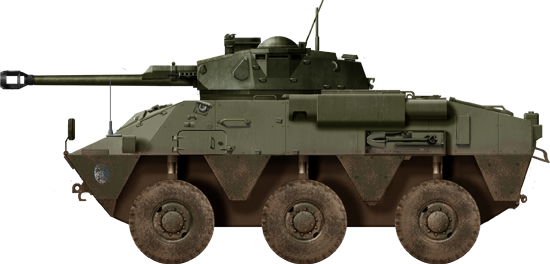
Provisional 1980 vehicle of the Spanish Legion with a decommissioned AML-90 turret
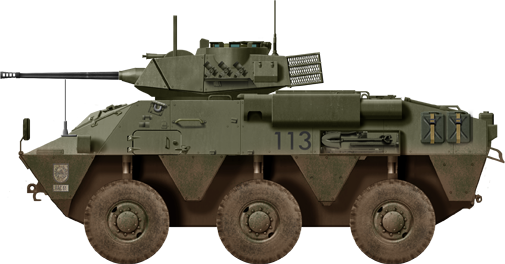
VEC In 1980s service, unknown unit
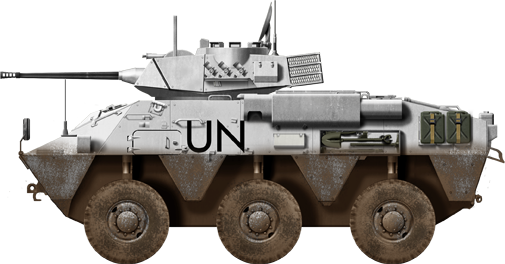
M1 used on Bosnia under UN colors, 1995
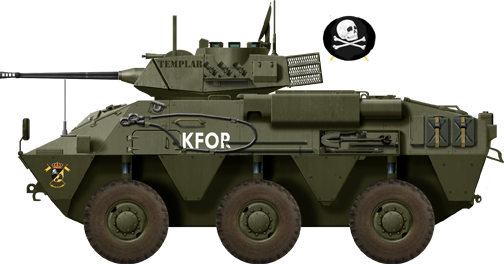
Upgraded M1 of the Lusitanian Batallion deployed in Kosovo on the 2000s
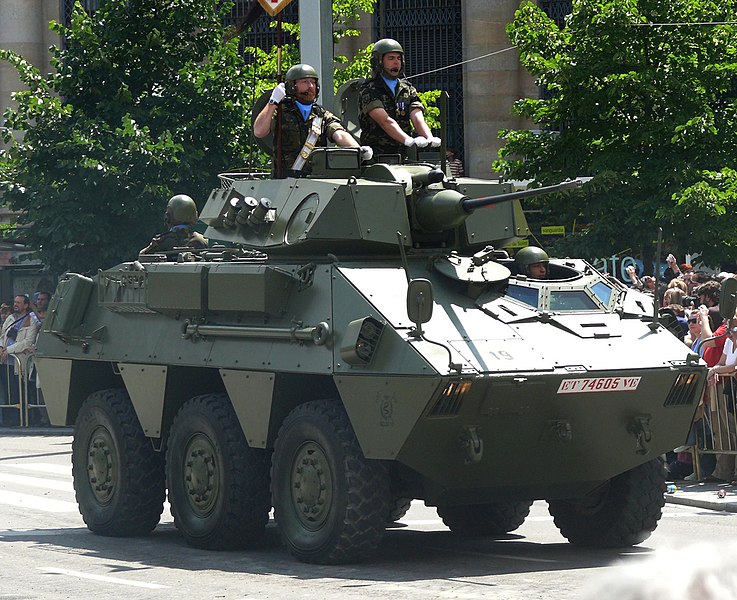










Sources/Read More
army-guide.comglobalsecurity.org
militarytoday.com
militaryfactory.com
tanknutdave.com
warwheels.net
iso-group.com
portierramaryaire.com
es.wikipedia.org

Cold War Tanks


































Cold war tanks posters

Cold War Main Battle Tanks

Cold War Soviet Army
Museums, Movies, Books & Games
The Tanks and Armor in pop culture
Tanks and armored vehicles in general are only really grasped when seen first person: The mass, the scale, it's all there. Explore also the way tanks were covered in the movie industry, in books and in video games.Movies:
Best tanks movie on warhistoryonline.com
On imdb.com
On bestsimilar.com/
miltours.com
liveabout.com/
watchmojo.com
Video Games:
pcgamesn.com
historyhit.com
levvvel.com
vg247.com/best-tank-games
mmobomb.com/
alienwarearena.com
